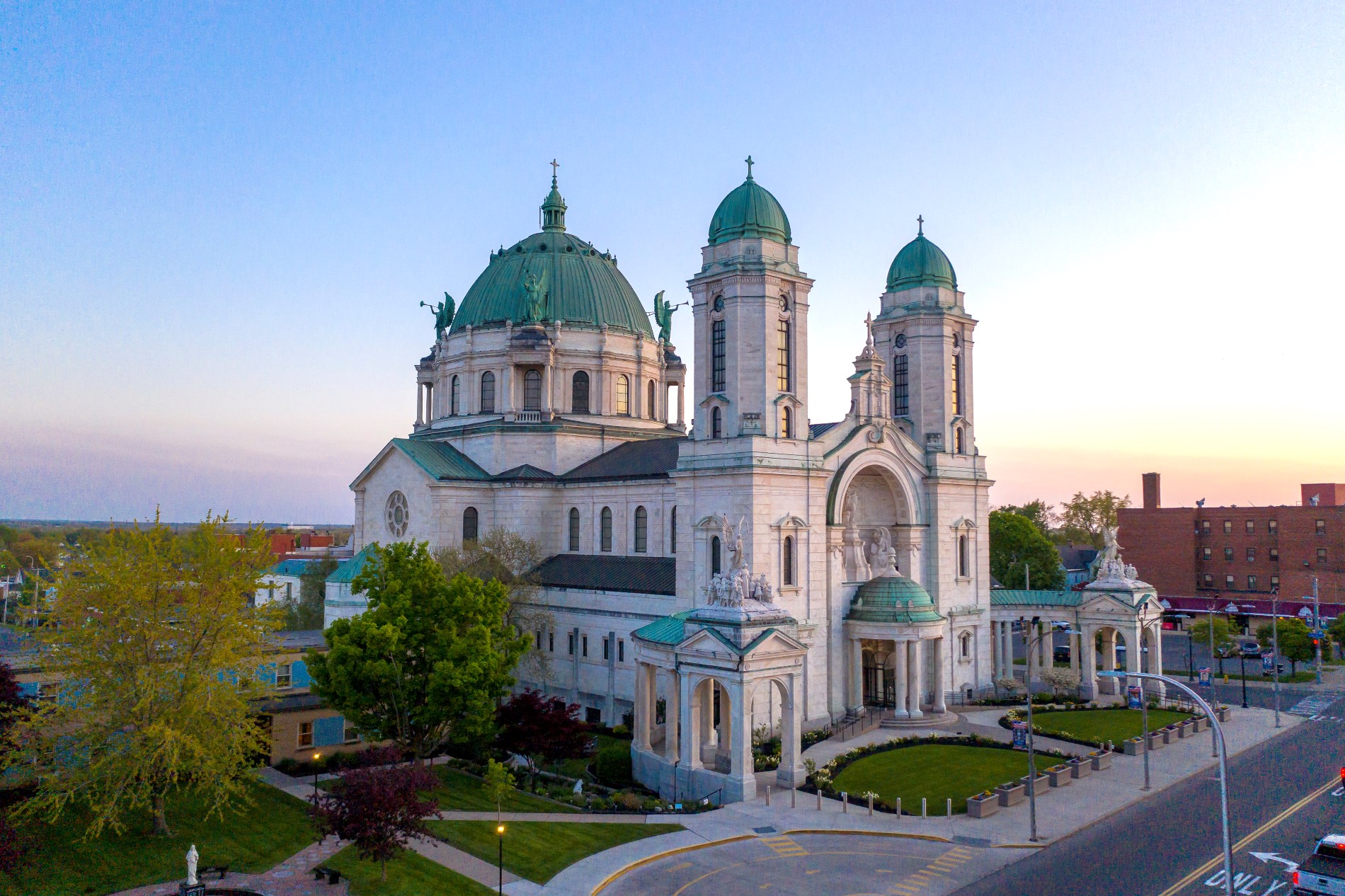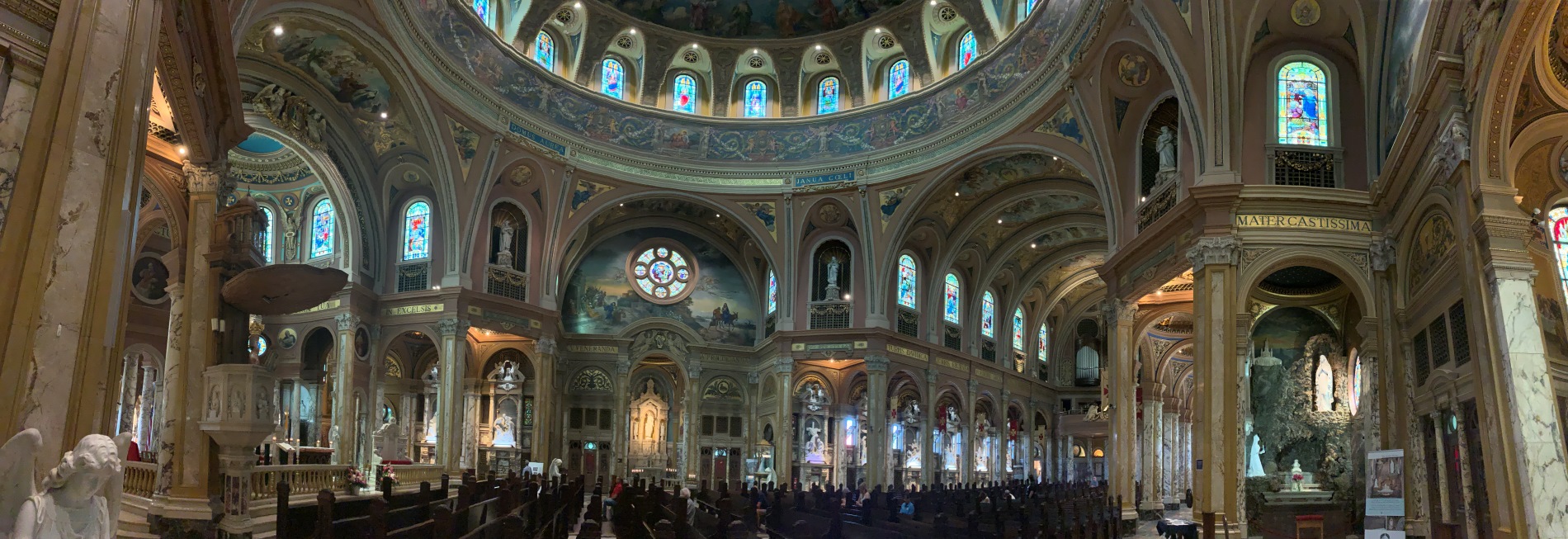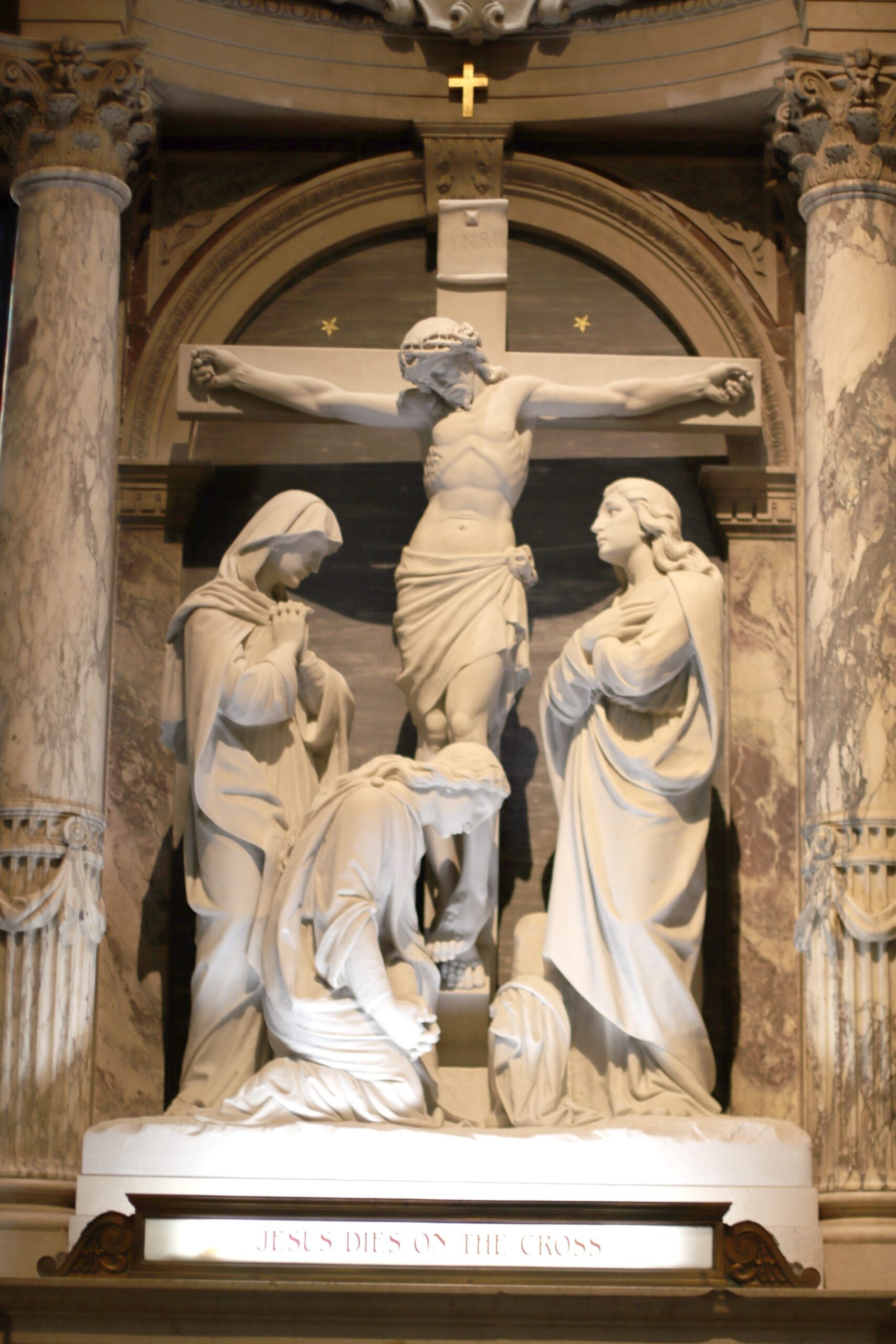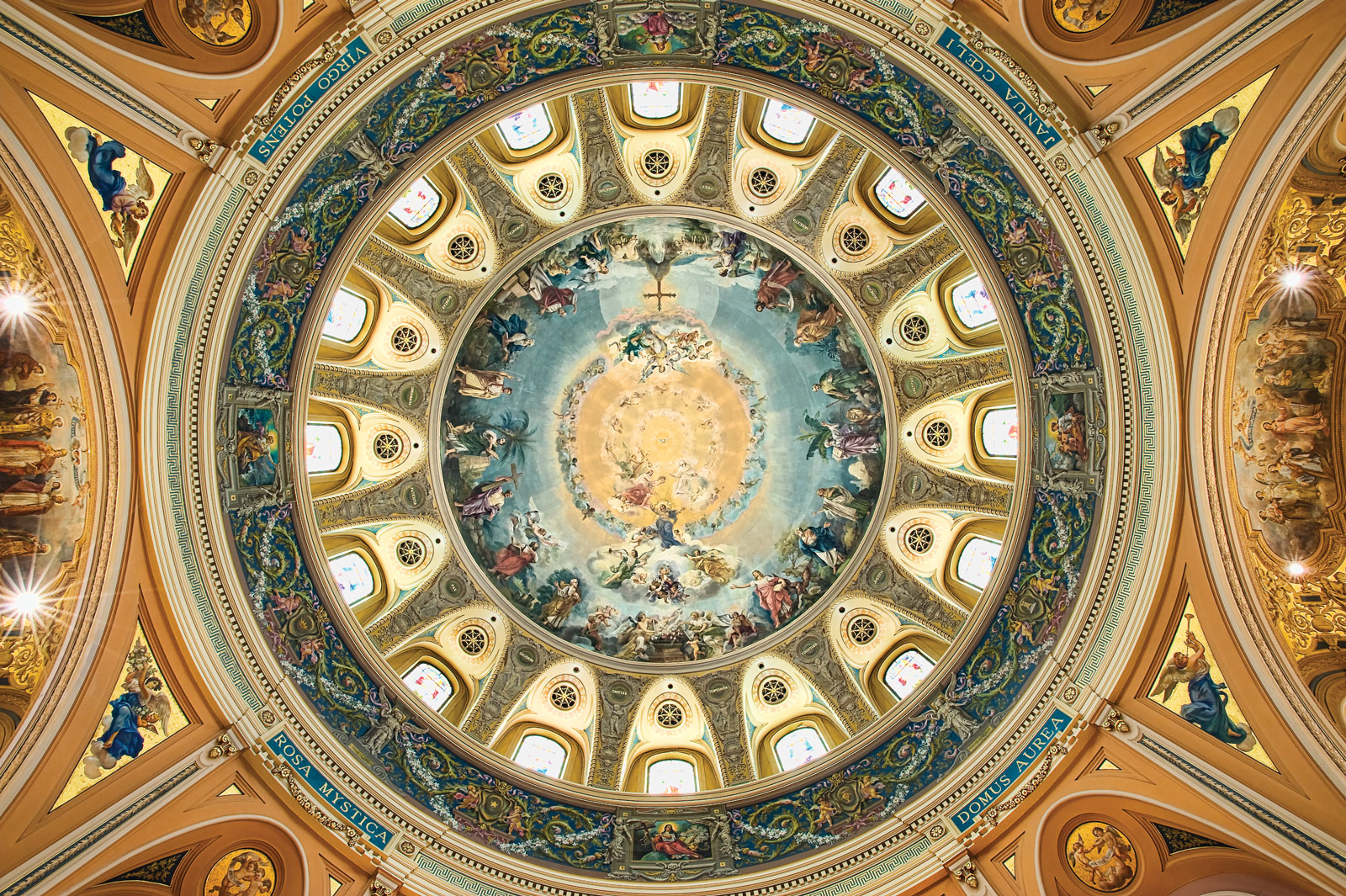Visible for miles in all directions, Our Lady of Victory National Shrine and Basilica’s massive copper dome dominates the Lackawanna skyline on the edge of Buffalo, New York. For over 100 years, Our Lady of Victory has been a local bedrock, at times attracting more than 40,000 visitors annually. It has served as a boost to Lackawanna, which has endured decades of transition since the closure of Bethlehem Steel’s manufacturing facility in the 1970s.
Father Nelson Baker, a priest, businessman, and Civil War veteran, was the visionary behind Our Lady of Victory. Known as the Padre of the Poor, Fr. Baker left a legacy of service to the Western New York community that has lasted decades. Particularly passionate about serving children, he led the construction of a boys’ protectory, a home for infants, and two schools on the parish campus. After a fire damaged the original St. Patrick’s Church beyond repair in 1916, Fr. Baker — inspired by his lifelong devotion to the Blessed Virgin Mary, as well as by the many magnificent Catholic shrines of Europe — enlisted an international team of crafts-people to assist in designing a grand basilica to take its place. He envisioned a “city of charity” to benefit his parishioners and the surrounding community.
Construction began in 1921. Working in close collaboration with Fr. Baker, architect Emile Uhlrich designed Our Lady of Victory in the French Renaissance style, using pure white Georgian marble for the exterior, but the design also seems to reflect the elaborate buildings of the 1901 Pan-American Exposition that took place in Buffalo. The copper dome was the second largest in the nation at the time of its completion in 1925 (the first being the US Capitol). Four angels surround it, each 18 feet tall and pointing in the cardinal directions, proclaiming victory around the globe. As the west colonnade was completed, Fr. Baker was surprised and a little embarrassed to find a statue of himself installed surrounded by the children he served, an angel watching overhead.
The interior is grand, boasting more than 46 varieties of marble, including red Spanish marble columns at the main altar. The parish estimates that the Shrine contains more than 2,000 angels — many carved into marble statues and reliefs, portrayed in the several giant murals along the ceiling and dome, or depicted in stained-glass windows. One of the most unique sections of the interior is the Grotto Shrine to Our Lady of Lourdes, in which Fr. Baker’s body was enshrined. The grotto is made of lava rock quarried from Mount Vesuvius in Italy.
NATIONAL FUND PROJECT
Situated less than two miles from Lake Erie, Our Lady of Victory has felt the toll of the area’s harsh environment. In recent years heavy summer rains caused water infiltration to damage both the sanctuary and lower levels of the Basilica. The deteriorating copper roof system and damaged drainpipes, among other concerns, needed to be dealt with quickly.
The National Fund for Sacred Places awarded Our Lady of Victory a grant in 2020 to assist in this endeavor. Grant funds targeted the partial restoration of the copper roof, replacement of the storm drainage system, restoration of exterior masonry, much-needed plumbing and electrical work, and the renovation of two community spaces in the Basilica’s lower level. Both the Marian Room and Susan E. Brvenik Community Room have already hosted numerous events, meetings, and gatherings.
Our Lady of Victory leaders discovered a great deal about their building during the comprehensive capital improvements. On inspecting the dome for damage, workers were surprised to find bullet holes scattered across its surface. Older parishioners recalled a time many decades ago when someone decided to shoot down pigeons roosting on the top of the roof, leaving telltale holes in the copper.
A part of the technical assistance offered to all National Fund grantees is the option to measure the economic impact on the surrounding community, which Our Lady of Victory chose to do. Partners for Sacred Places staff, using the Economic Halo Effect tool, found that the parish adds more than $12 million in economic value to the Lackawanna community each year, not including the vast social and economic benefit offered by OLV Charities and OLV Human Services, which serve eight counties across western New York.
In a building as large and complex as the Basilica, new challenges constantly arise. The centennial has shifted the parish’s perspective toward its building, inviting leaders to look beyond the short term and forward to the next hundred years.
Over the last five years, many new investments have emerged in both the public and private sectors in Lackawanna. Businesses are popping up across the region. State programs offer incentives for
the cleanup and revitalization of former industrial lots along the lakefront. Douglas Jemal, a New
York City real estate developer making high-profile investments across Buffalo, has recently turned
his attention to Lackawanna.
As Lackawanna experiences renewal, Our Lady of Victory is determined to remain part of its bright future.




